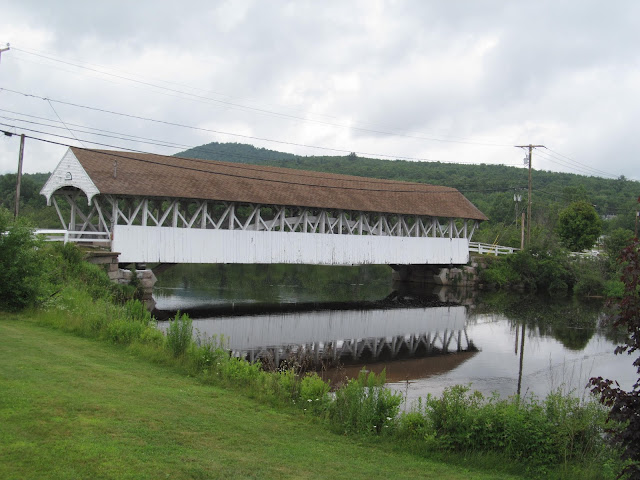The centerpiece of the northern New Hampshire village of Groveton is the Groveton Covered Bridge. Built in 1852 by Captain Charles Richardson and his son, the Groveton Covered Bridge is 131 feet long and was designed with a Paddleford truss design which is commonly found among covered bridges in New England. The bridge spans the Upper Ammonoosuc River, connecting US 3 with NH 110. The bridge is no longer in use for vehicle traffic, but it was part of US 3 until a new bridge was built for the highway in 1939, bypassing the covered bridge. The covered bridge remains in place for historical and recreational purposes.
Renowned covered bridge restoration experts who should be familiar to those with an interest in New Hampshire's covered bridges, Milton Graton and his son, Arnold Graton, repaired the bridge between the years of 1964 and 1965. Further repairs took place in 2020, after a $10,000 Moose Plate grant was approved on December 18, 2019. The repairs included removing and replacing the clapboards on the north end of the bridge, removing and replacing at least half of the boards on south end gable, removing and replacing at least one strut on the bridge’s downstream side, along with giving the bridge a nice, fresh coat of paint.
I visited the Groveton Covered Bridge before this new paint job was given. It is a nice covered bridge to stop at and admire, perhaps have a picnic lunch inside the bridge or to go fishing on the river near the bridge.
How to Get There:
Sources and Links:
Bridgehunter.com - Groveton Covered Bridge 29-04-04
NHTourGuide.com - Groveton Covered Bridge New Hampshire
Greg Disch Photography - Groveton Covered Bridge
New Hampshire Bridges - Groveton Covered Bridge
Ontfin.com - Groveton Covered Bridge, New Hampshire
Stay Work Play New Hampshire - A Day Trip Through the North Country
National Society for the Preservation of Covered Bridges - Bridges Under Repair
Library of Congress - The 126-foot-long Groveton, New Hampshire, Covered Bridge over the Upper Ammanoosuc River, constructed in 1852






Comments